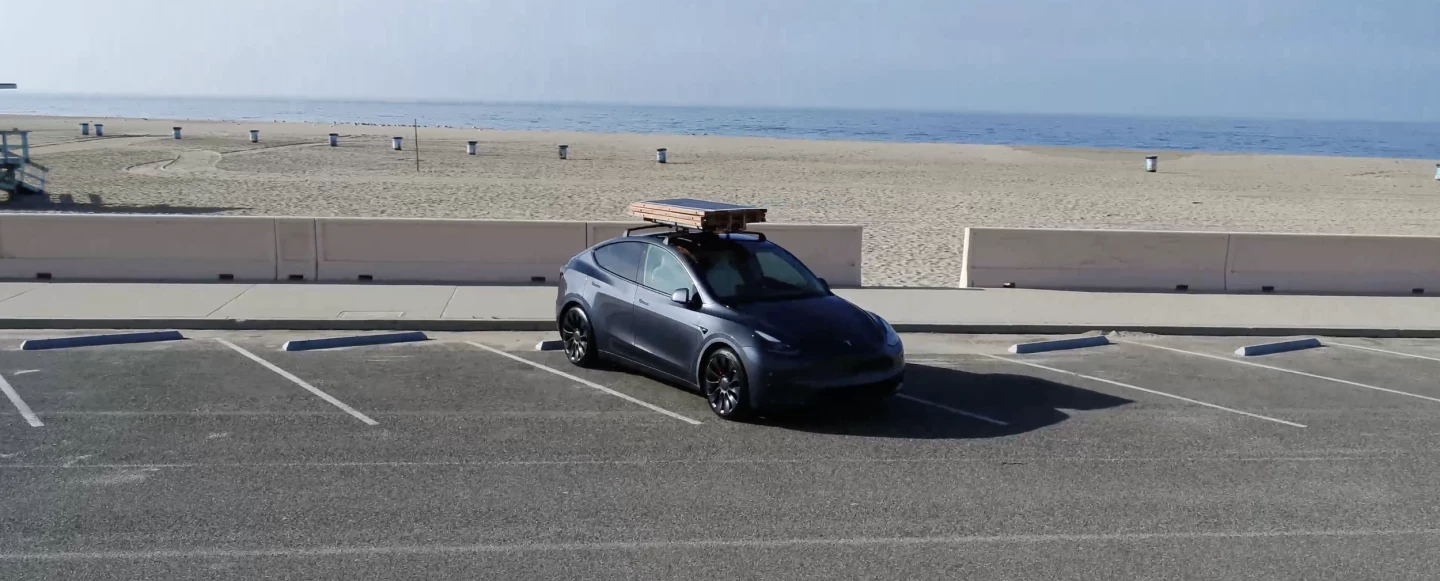For the last couple of years, Omid Sadeghpour has been working on a fold-out solar array for his Tesla Model Y, which he reckons can get him up to 20 miles of range per day without plugging in. Now he's moving to an improved Beta2 version.
Electric vehicles used for the daily commute could spend much of their day sat motionless out in the open in a car park, perhaps with the Sun beating down on the roof. So why not put all of that solar energy to good use? That's the thinking behind Sadeghpour's Dartsolar project.
He's built a wood-framed Beta 1 prototype with Jeran Bruce at California's Forged Makerspace, with telescoping carbon-fiber tubes allowing nine 175-W flexible panels to be folded out when the vehicle is parked.
The array is said to weigh under 165 lb (75 kg) in total and is designed not to expand beyond a standard US parking space. The panel junction boxes are all stowed in the trunk at the moment, which the designer claims gives him the freedom to connect the panels in series or parallel, as well as removing bulk and weight from the rooftop installation. When it's time to drive on, the array can be collapsed down in under a minute to a rooftop box shape.

Sadeghpour reckons that the setup can reliably add around 6 kWh of juice to the battery per day via DC-to-AC-to-DC charging, which translates to roughly 20 miles (32 km) of solar-powered driving. But to be clear, this is very much a DIY project at the moment and is nowhere near ready for consumer release.
Beta1 stands quite high on the roof when folded – 11 inches (28 cm) to be exact – so will affect overall aero, but the team is currently working on a second prototype with a support frame made from carbon fiber that will stand around half that height in drive mode.
Beta2 (which is actually the fifth iteration) is expected to bump the wattage to 4,000 for up to 45 miles of range, though the team is also looking into DC-to-DC charging for "about 63 miles for a five-hour sun window."
According to a Reddit post from Sadeghpour last month, he intends to make the Beta1 blueprints and build files available via his Dartsolar website – where folks can also get project updates. The video below has much more detail.
Source: Dartsolar







